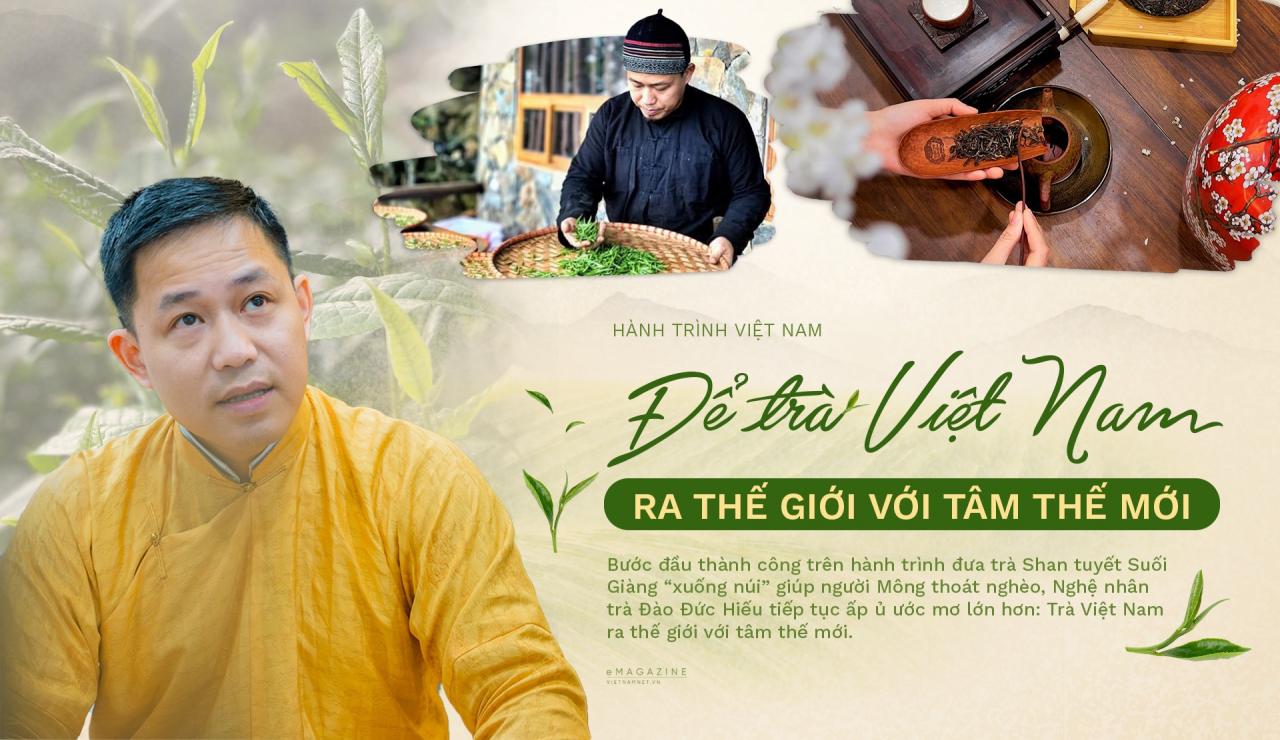
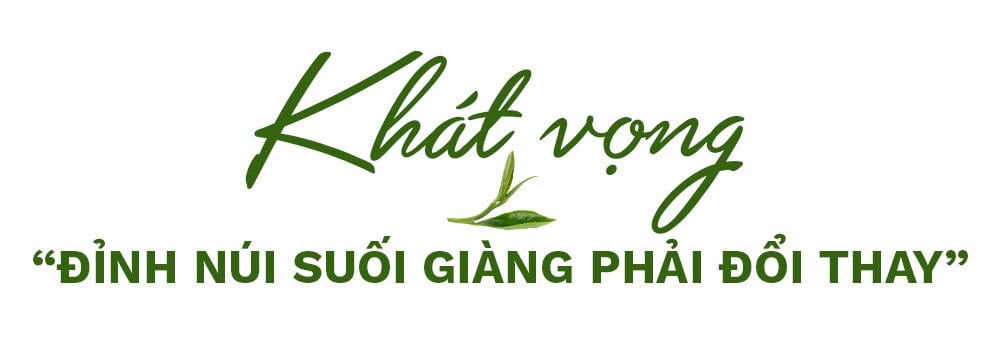 Five years ago, the hidden value of Suoi Giang Mountain (Yen Bai Province) - one of the six ancestral tea regions in the world with thousands of ancient tea trees - had not been "awakened". Inheriting a valuable asset that many rich people want but cannot have, thousands of Mong ethnic households still cannot get out of the list of poor households in this extremely difficult area. “Vietnam ranks 5th in the world in tea exports with an output of more than 200,000 tons/year, but many people who make tea, take care of tea, and preserve tea trees are the poorest in the world. We export raw so we have no brand. Many Vietnamese tea products are sold abroad at prices 300 times higher. This is a great pain,” the thought made the 8x generation man Dao Duc Hieu feel heartbroken during his first stop at Suoi Giang in 2016. The love for Suoi Giang tea from his grandfather (Mr. Dao Thanh, a living witness of the Ho Chi Minh Trail) after many years of simmering in Hieu's blood and mind, suddenly flared up strongly. Having accumulated quite a bit of experience after traveling to more than 30 countries around the world to learn about tea, the architect born and raised in Hanoi decided to help the Mong people in Suoi Giang escape poverty and become rich from the hundreds of years old Shan Tuyet tea trees that were "nurtured" by heaven on the top of a high mountain. Hieu built a house in Suoi Giang, worked together, ate together, and shared tea-making experiences with the people. The Tea Cultural Space project in Suoi Giang, built by Hieu and a friend, won a national architecture award. In the first year, every weekend, he traveled 300 km by motorbike from Hanoi to Yen Bai, and returned on Sunday evening, regardless of the potential risks on the dangerous mountain passes. The motivation of the young man from Hanoi was not money but the aspiration that "this mountain must change". When Hieu talked about his plan to “go to the mountains” to make tea to help the Mong people escape poverty sustainably, many people said he was “abnormal”, some even said he was “bewitched”. Even the leaders of Yen Bai province once advised Hieu to choose another area where it would be easier to work. The Mong people love to live freely and are not used to being constrained by discipline. Running a cooperative of all Mong people is not a simple matter.
Five years ago, the hidden value of Suoi Giang Mountain (Yen Bai Province) - one of the six ancestral tea regions in the world with thousands of ancient tea trees - had not been "awakened". Inheriting a valuable asset that many rich people want but cannot have, thousands of Mong ethnic households still cannot get out of the list of poor households in this extremely difficult area. “Vietnam ranks 5th in the world in tea exports with an output of more than 200,000 tons/year, but many people who make tea, take care of tea, and preserve tea trees are the poorest in the world. We export raw so we have no brand. Many Vietnamese tea products are sold abroad at prices 300 times higher. This is a great pain,” the thought made the 8x generation man Dao Duc Hieu feel heartbroken during his first stop at Suoi Giang in 2016. The love for Suoi Giang tea from his grandfather (Mr. Dao Thanh, a living witness of the Ho Chi Minh Trail) after many years of simmering in Hieu's blood and mind, suddenly flared up strongly. Having accumulated quite a bit of experience after traveling to more than 30 countries around the world to learn about tea, the architect born and raised in Hanoi decided to help the Mong people in Suoi Giang escape poverty and become rich from the hundreds of years old Shan Tuyet tea trees that were "nurtured" by heaven on the top of a high mountain. Hieu built a house in Suoi Giang, worked together, ate together, and shared tea-making experiences with the people. The Tea Cultural Space project in Suoi Giang, built by Hieu and a friend, won a national architecture award. In the first year, every weekend, he traveled 300 km by motorbike from Hanoi to Yen Bai, and returned on Sunday evening, regardless of the potential risks on the dangerous mountain passes. The motivation of the young man from Hanoi was not money but the aspiration that "this mountain must change". When Hieu talked about his plan to “go to the mountains” to make tea to help the Mong people escape poverty sustainably, many people said he was “abnormal”, some even said he was “bewitched”. Even the leaders of Yen Bai province once advised Hieu to choose another area where it would be easier to work. The Mong people love to live freely and are not used to being constrained by discipline. Running a cooperative of all Mong people is not a simple matter. 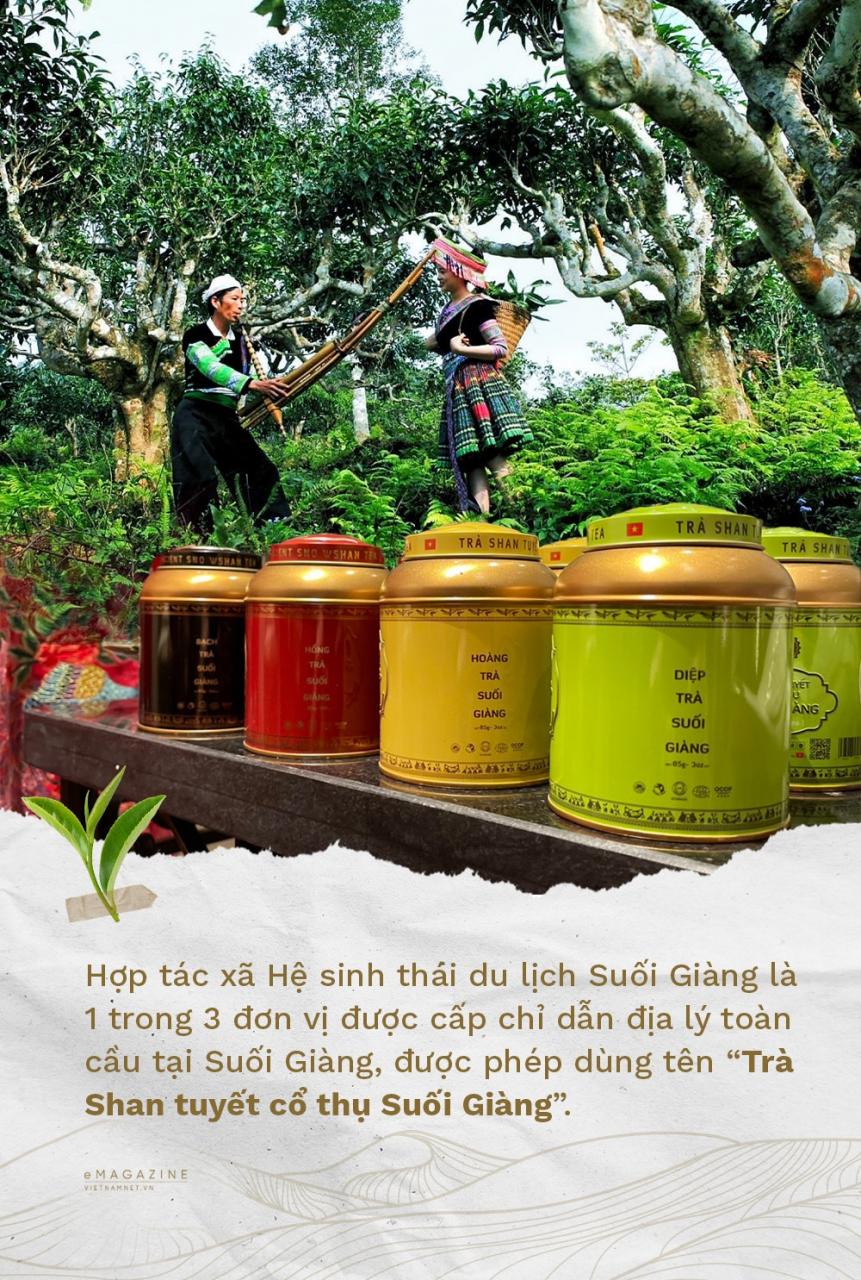 However, Hieu did something surprising: At the Suoi Giang Ecotourism Cooperative (a combination of tea production and tourism) where Hieu is the Director, team members strictly follow the regulations of wearing blue work uniforms, team leaders wearing orange shirts; everyone goes to work on time; if they want to take a break, they have to ask for permission first; no drinking during working hours... "We also planned to apply fingerprint attendance, but the people here work so hard that their fingerprints are worn out and unrecognizable. After that, every working hour, the teams take check-in photos, team members who are 3 minutes or more late are fined 50,000 VND, and the team leader is also fined 100,000 VND. So 30 minutes before the roll call, everyone calls each other to tell each other to go to work on time. Our cooperative has become an inspirational story for Yen Bai province about changing the mindset and habits of the Mong people", the 8x Director shared with a smile.
However, Hieu did something surprising: At the Suoi Giang Ecotourism Cooperative (a combination of tea production and tourism) where Hieu is the Director, team members strictly follow the regulations of wearing blue work uniforms, team leaders wearing orange shirts; everyone goes to work on time; if they want to take a break, they have to ask for permission first; no drinking during working hours... "We also planned to apply fingerprint attendance, but the people here work so hard that their fingerprints are worn out and unrecognizable. After that, every working hour, the teams take check-in photos, team members who are 3 minutes or more late are fined 50,000 VND, and the team leader is also fined 100,000 VND. So 30 minutes before the roll call, everyone calls each other to tell each other to go to work on time. Our cooperative has become an inspirational story for Yen Bai province about changing the mindset and habits of the Mong people", the 8x Director shared with a smile. 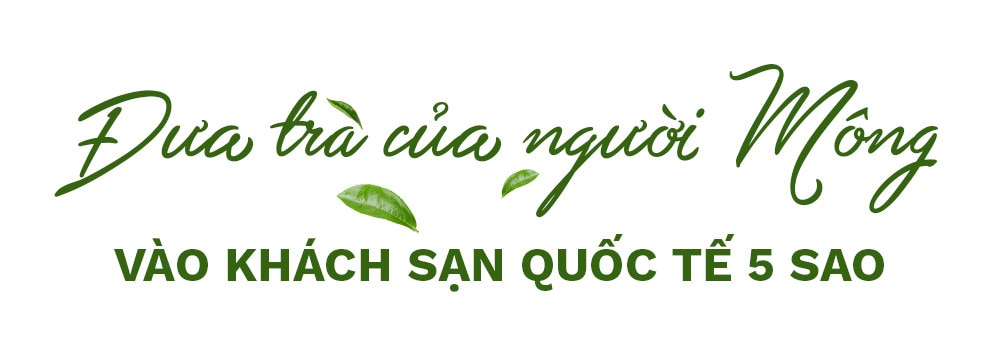 Following the instructions of Director Dao Duc Hieu, the Mong people's way of making tea is different from before. They choose more carefully when harvesting tea leaves: 1 bud and 2 young leaves is used to make green tea; 1 bud and 2 leaves, of which 1 is mature, is used to make yellow tea; 2 fully mature leaves are used to make black tea; and only 1 bud is used to pick white tea. After picking the tea, each leaf is arranged in a tray for preliminary processing. Next is the processing: Green tea is roasted tea, meaning it is picked and roasted immediately; yellow tea is left to wither before roasting; black tea is not roasted, only kneaded to ferment and then dried; and white tea is brewed one bud at a time without kneading, to ferment 100% naturally. Next is the tea nurturing stage so that the tea gradually becomes more delicious over time: It is necessary to pay attention to the temperature and humidity to preserve the tea appropriately, taking care of it carefully like "taking care of a newborn baby". For generations, they have mainly produced green tea. Now, from one ancient tea tree, the Mong people in Suoi Giang can produce many types of tea according to international standards. 1kg of tea, which used to be sold for only a few hundred thousand dong, can now be sold for millions. Many households, which used to rely on a few hundred thousand dong in subsidies from the State every month, have now been able to buy cars. Dao Duc Hieu is gradually loved by the Mong people like a family member, and they call him "Giang A Hieu".
Following the instructions of Director Dao Duc Hieu, the Mong people's way of making tea is different from before. They choose more carefully when harvesting tea leaves: 1 bud and 2 young leaves is used to make green tea; 1 bud and 2 leaves, of which 1 is mature, is used to make yellow tea; 2 fully mature leaves are used to make black tea; and only 1 bud is used to pick white tea. After picking the tea, each leaf is arranged in a tray for preliminary processing. Next is the processing: Green tea is roasted tea, meaning it is picked and roasted immediately; yellow tea is left to wither before roasting; black tea is not roasted, only kneaded to ferment and then dried; and white tea is brewed one bud at a time without kneading, to ferment 100% naturally. Next is the tea nurturing stage so that the tea gradually becomes more delicious over time: It is necessary to pay attention to the temperature and humidity to preserve the tea appropriately, taking care of it carefully like "taking care of a newborn baby". For generations, they have mainly produced green tea. Now, from one ancient tea tree, the Mong people in Suoi Giang can produce many types of tea according to international standards. 1kg of tea, which used to be sold for only a few hundred thousand dong, can now be sold for millions. Many households, which used to rely on a few hundred thousand dong in subsidies from the State every month, have now been able to buy cars. Dao Duc Hieu is gradually loved by the Mong people like a family member, and they call him "Giang A Hieu". 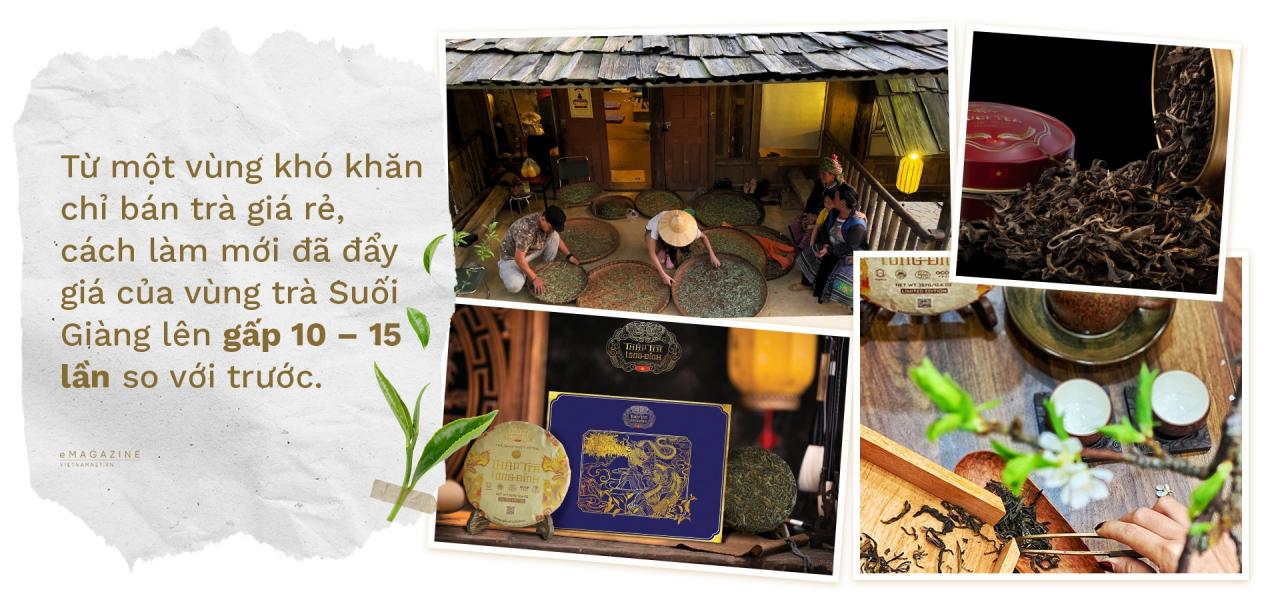 In 2000, when he visited Metropole - the oldest hotel in Hanoi (built in 1901), he did not see Vietnamese tea on the menu. Mr. Hieu asked and found out the reason: Vietnamese tea did not meet the standards. Before, there was also West Lake lotus tea but it was labeled "Make in India". Bringing evidence proving that Suoi Giang Shan Tuyet tea met French standards, Mr. Hieu convinced the Metropole leadership: "I want to help Metropole's customers experience the quintessence of Vietnamese tea, a tea product that can help take care of people's health, a national pride of ours". Not only that, he also put forward 3 conditions: "My tea must be on the first page of the tea menu, keeping the name Suoi Giang; The highest price on the tea list because it is ancient tea, Shan Tuyet line, the highest quality tea according to the world's evaluation; The menu must tell the story of my tea region". 7 months later, the Metropole agreed. And for the past 4 years, Suoi Giang Shan Tuyet tea has occupied the top position on the Metropole's tea menu. Metropole belongs to the Accor Group, which is very famous worldwide, so the tea products of the Mong people in Suoi Giang have also been present in a number of other 5-star hotels in the Accor system such as Legacy Yen Tu, Movenpick... Not satisfied with what he has, Director Dao Duc Hieu continues to invest in research and development (R&D) activities to increase the value of Vietnamese tea. "Da Hong Pao tea from Wu Yishan Mountain (China) is selling for 10.4 million yuan/kg, equivalent to 37 billion VND/kg. The goal of 1 billion VND/kg of Vietnamese tea that I am aiming for is not too unrealistic", the tea artisan of the 8x generation confided. With a good way of doing things - Not selling raw tea but selling high-standard tea products; selling tea by the gram, not by the ton - Suoi Giang Ecotourism Cooperative of Director Dao Duc Hieu was honored as an “Outstanding Enterprise” by the Ministry of Agriculture and Rural Development. At a recent conference, instead of bringing a report as usual, the Minister of Agriculture and Rural Development held a box of tea in his hand, telling about Suoi Giang Shan Tuyet Tea of “Giang A Hieu” as an inspirational story in the field of sustainable, multi-value agricultural development.
In 2000, when he visited Metropole - the oldest hotel in Hanoi (built in 1901), he did not see Vietnamese tea on the menu. Mr. Hieu asked and found out the reason: Vietnamese tea did not meet the standards. Before, there was also West Lake lotus tea but it was labeled "Make in India". Bringing evidence proving that Suoi Giang Shan Tuyet tea met French standards, Mr. Hieu convinced the Metropole leadership: "I want to help Metropole's customers experience the quintessence of Vietnamese tea, a tea product that can help take care of people's health, a national pride of ours". Not only that, he also put forward 3 conditions: "My tea must be on the first page of the tea menu, keeping the name Suoi Giang; The highest price on the tea list because it is ancient tea, Shan Tuyet line, the highest quality tea according to the world's evaluation; The menu must tell the story of my tea region". 7 months later, the Metropole agreed. And for the past 4 years, Suoi Giang Shan Tuyet tea has occupied the top position on the Metropole's tea menu. Metropole belongs to the Accor Group, which is very famous worldwide, so the tea products of the Mong people in Suoi Giang have also been present in a number of other 5-star hotels in the Accor system such as Legacy Yen Tu, Movenpick... Not satisfied with what he has, Director Dao Duc Hieu continues to invest in research and development (R&D) activities to increase the value of Vietnamese tea. "Da Hong Pao tea from Wu Yishan Mountain (China) is selling for 10.4 million yuan/kg, equivalent to 37 billion VND/kg. The goal of 1 billion VND/kg of Vietnamese tea that I am aiming for is not too unrealistic", the tea artisan of the 8x generation confided. With a good way of doing things - Not selling raw tea but selling high-standard tea products; selling tea by the gram, not by the ton - Suoi Giang Ecotourism Cooperative of Director Dao Duc Hieu was honored as an “Outstanding Enterprise” by the Ministry of Agriculture and Rural Development. At a recent conference, instead of bringing a report as usual, the Minister of Agriculture and Rural Development held a box of tea in his hand, telling about Suoi Giang Shan Tuyet Tea of “Giang A Hieu” as an inspirational story in the field of sustainable, multi-value agricultural development. 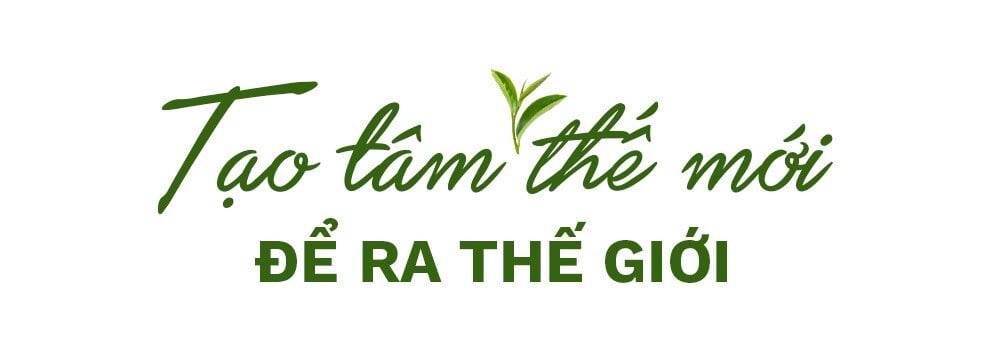 400 years ago, Vietnam exported Vietnamese tea to the world through the Hoi An port. The tea export invoices kept at the Hoi An Museum are clear evidence. Creating a new mindset to bring Vietnamese tea to the world is becoming the new aspiration of 8x Artisan Dao Duc Hieu. With the acumen of a Master of Branding and Marketing Communications, Director Dao Duc Hieu quickly brought Suoi Giang tea products to 4 international standard tea lines: Green Tea - Yellow Tea - Black Tea - White Tea. Product user manuals are printed in 4 languages: Vietnamese - English - Japanese - Chinese, to serve the main markets and customers, clearly stating specific information about the 4 tea lines. In particular, each box of Suoi Giang tea has an image of a red flag with a yellow star and the small words “Tea Brand in Vietnam”, conveying the message about the Vietnamese tea brand. The next task: Conquer international standards to have a “passport” to foreign markets.
400 years ago, Vietnam exported Vietnamese tea to the world through the Hoi An port. The tea export invoices kept at the Hoi An Museum are clear evidence. Creating a new mindset to bring Vietnamese tea to the world is becoming the new aspiration of 8x Artisan Dao Duc Hieu. With the acumen of a Master of Branding and Marketing Communications, Director Dao Duc Hieu quickly brought Suoi Giang tea products to 4 international standard tea lines: Green Tea - Yellow Tea - Black Tea - White Tea. Product user manuals are printed in 4 languages: Vietnamese - English - Japanese - Chinese, to serve the main markets and customers, clearly stating specific information about the 4 tea lines. In particular, each box of Suoi Giang tea has an image of a red flag with a yellow star and the small words “Tea Brand in Vietnam”, conveying the message about the Vietnamese tea brand. The next task: Conquer international standards to have a “passport” to foreign markets. 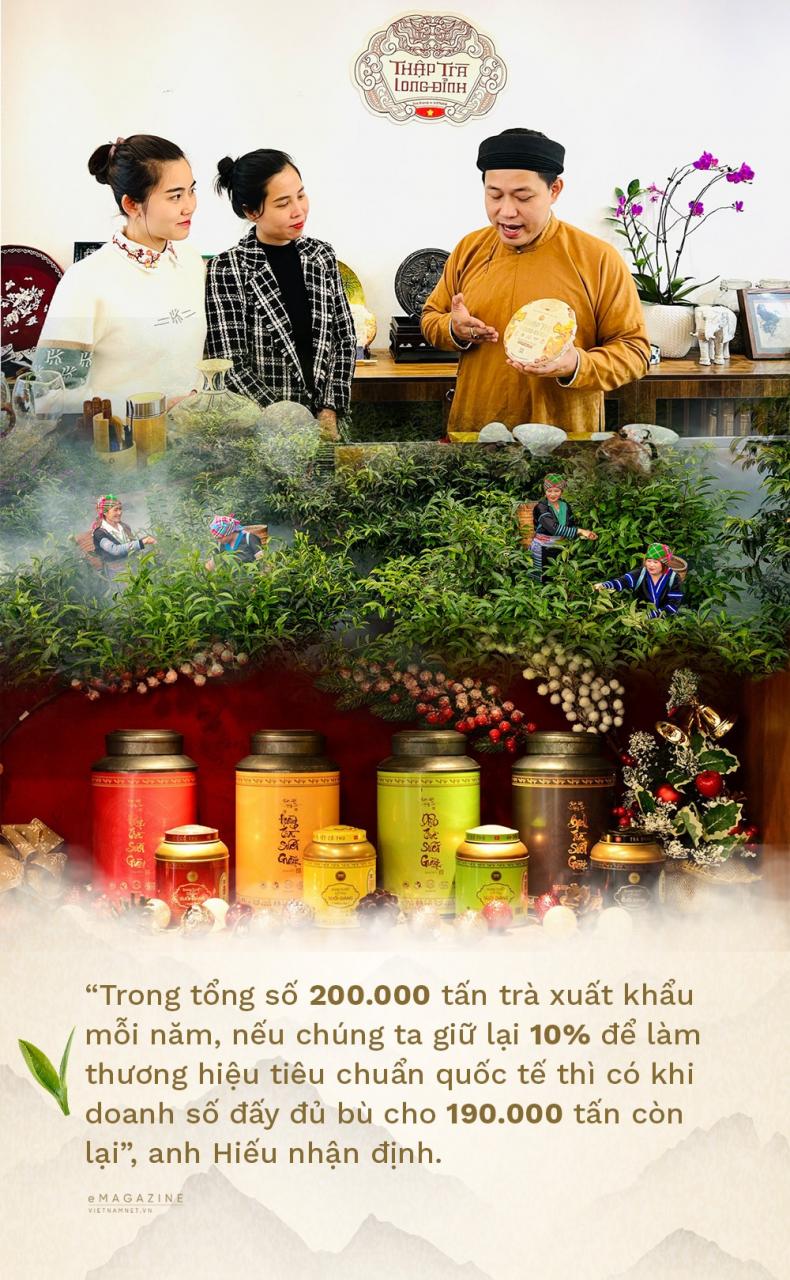 Suoi Giang tea has many outstanding features, attracting the attention of foreign consumers. For example, compared to a Taiwanese midland tea, Suoi Giang ancient tea has an EGCG content (anti-aging) about 100 times higher. Ancient tea trees live in the clouds, photosynthesize very little, so the amount of tannin and caffeine is also low, and does not cause insomnia for tea drinkers. “We want to conquer Japan first because this is the most demanding market in the world. Japan only has midland tea, not ancient tea trees like in Suoi Giang. After we sent samples of our soil, water, and tea for testing, they said “your tea is better than ours”. Japanese tea meets Organic standards. Suoi Giang Shan Tuyet tea is forest tea, nurtured by nature, meeting Wild standards - a higher standard than organic”, tea artisan Dao Duc Hieu boasted. While waiting for Japan to issue the Organic standard certificate, Director Dao Duc Hieu's Suoi Giang Ecotourism Cooperative is striving to obtain the Ecocert Certificate and the European Organic Standard; and is expected to obtain the Halal Certificate before 2025 to conquer the Muslim market. Director Hieu also boldly proposed the idea of organizing the Asia Tea Festival in Vietnam in 2024 to "bring the whole world to Vietnam", letting the world know that Vietnam has ancient tea regions that are confident in confronting any competitor, and that Vietnam is ready to join the "20 billion dollar game" of the global ancient tea market. The biggest concern of Tea Artisan Dao Duc Hieu on the journey to bring Vietnamese tea to the world is the lack of solidarity among domestic tea makers. “Ta Xua has the good things of Ta Xua, Sung Do has the special things of Sung Do, Suoi Giang has the tradition of Suoi Giang, Tay Con Linh has the sublimation of Tay Con Linh, Ha Giang is the big brother of the ancient tea region. However, there is still a situation where this family criticizes the tea of the other family, everyone thinks that their tea is the best. Without solidarity, it is difficult for us to join hands to go far, we are only stuck in a very small "pond". To go to the "big sea", to put Vietnam on the world tea map, we need to unite", Tea artisan Dao Duc Hieu analyzed, at the same time announcing the good news, at the beginning of 2024, he launched the brand Thap Tra Long Dinh, gathering tea products from 10 mountain peaks - famous tea regions, joining hands to go to the world. Also in 2024, Mr. Hieu and his associates will launch the Shan Sen tea brand: Combining Shan Tuyet tea with lotus flowers to create a tea brand that can make Vietnamese people proud when talking to international friends. In addition, the project "Vietnam - The quintessence of craft villages" will continue to be implemented, so that tea does not "go down the mountain" alone but is accompanied by ceramics, silk, wood, lacquer, mother-of-pearl inlay, etc., creating a tea space that meets increasingly diverse needs.
Suoi Giang tea has many outstanding features, attracting the attention of foreign consumers. For example, compared to a Taiwanese midland tea, Suoi Giang ancient tea has an EGCG content (anti-aging) about 100 times higher. Ancient tea trees live in the clouds, photosynthesize very little, so the amount of tannin and caffeine is also low, and does not cause insomnia for tea drinkers. “We want to conquer Japan first because this is the most demanding market in the world. Japan only has midland tea, not ancient tea trees like in Suoi Giang. After we sent samples of our soil, water, and tea for testing, they said “your tea is better than ours”. Japanese tea meets Organic standards. Suoi Giang Shan Tuyet tea is forest tea, nurtured by nature, meeting Wild standards - a higher standard than organic”, tea artisan Dao Duc Hieu boasted. While waiting for Japan to issue the Organic standard certificate, Director Dao Duc Hieu's Suoi Giang Ecotourism Cooperative is striving to obtain the Ecocert Certificate and the European Organic Standard; and is expected to obtain the Halal Certificate before 2025 to conquer the Muslim market. Director Hieu also boldly proposed the idea of organizing the Asia Tea Festival in Vietnam in 2024 to "bring the whole world to Vietnam", letting the world know that Vietnam has ancient tea regions that are confident in confronting any competitor, and that Vietnam is ready to join the "20 billion dollar game" of the global ancient tea market. The biggest concern of Tea Artisan Dao Duc Hieu on the journey to bring Vietnamese tea to the world is the lack of solidarity among domestic tea makers. “Ta Xua has the good things of Ta Xua, Sung Do has the special things of Sung Do, Suoi Giang has the tradition of Suoi Giang, Tay Con Linh has the sublimation of Tay Con Linh, Ha Giang is the big brother of the ancient tea region. However, there is still a situation where this family criticizes the tea of the other family, everyone thinks that their tea is the best. Without solidarity, it is difficult for us to join hands to go far, we are only stuck in a very small "pond". To go to the "big sea", to put Vietnam on the world tea map, we need to unite", Tea artisan Dao Duc Hieu analyzed, at the same time announcing the good news, at the beginning of 2024, he launched the brand Thap Tra Long Dinh, gathering tea products from 10 mountain peaks - famous tea regions, joining hands to go to the world. Also in 2024, Mr. Hieu and his associates will launch the Shan Sen tea brand: Combining Shan Tuyet tea with lotus flowers to create a tea brand that can make Vietnamese people proud when talking to international friends. In addition, the project "Vietnam - The quintessence of craft villages" will continue to be implemented, so that tea does not "go down the mountain" alone but is accompanied by ceramics, silk, wood, lacquer, mother-of-pearl inlay, etc., creating a tea space that meets increasingly diverse needs. 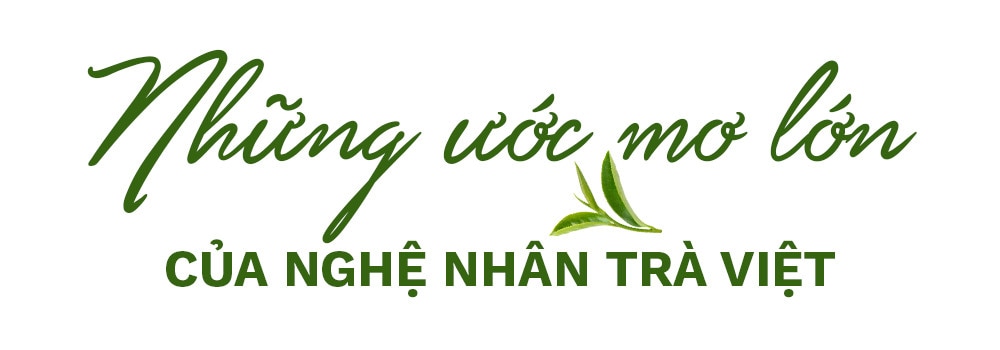 After 21 years of tirelessly pursuing the dream of creating the highest value for Vietnamese tea, Tea Artisan Dao Duc Hieu still worries: When will there be a National Tea Strategy? “More than 40 provinces/cities in Vietnam have tea. Including midland tea and ancient tea, the whole country has nearly 80 tea regions. Vietnam can be called a tea country. Therefore, there should be a National Tea Strategy soon,” Mr. Hieu recommended. When there is a National Tea Strategy, the path to developing Vietnamese tea will have more companionship and support from the Government and related ministries and branches. For example, the Ministry of Information and Communications will support the application of technology to increase the efficiency of Vietnamese tea exports. “Traceability is a mandatory requirement for export products. The ancient tea trees in Suoi Giang have QR codes providing information about the tea trees, tea gardens, and tea regions; data is entered by humans into the technology system. But that still does not really meet the requirements. Each tea tree in Suoi Giang in particular and Vietnamese tea regions in general need to be attached with an NTF chip to automatically collect measured data on the amount of sunlight, rain, wind, etc., thereby showing the quality of the tea,” Mr. Hieu noted.
After 21 years of tirelessly pursuing the dream of creating the highest value for Vietnamese tea, Tea Artisan Dao Duc Hieu still worries: When will there be a National Tea Strategy? “More than 40 provinces/cities in Vietnam have tea. Including midland tea and ancient tea, the whole country has nearly 80 tea regions. Vietnam can be called a tea country. Therefore, there should be a National Tea Strategy soon,” Mr. Hieu recommended. When there is a National Tea Strategy, the path to developing Vietnamese tea will have more companionship and support from the Government and related ministries and branches. For example, the Ministry of Information and Communications will support the application of technology to increase the efficiency of Vietnamese tea exports. “Traceability is a mandatory requirement for export products. The ancient tea trees in Suoi Giang have QR codes providing information about the tea trees, tea gardens, and tea regions; data is entered by humans into the technology system. But that still does not really meet the requirements. Each tea tree in Suoi Giang in particular and Vietnamese tea regions in general need to be attached with an NTF chip to automatically collect measured data on the amount of sunlight, rain, wind, etc., thereby showing the quality of the tea,” Mr. Hieu noted. 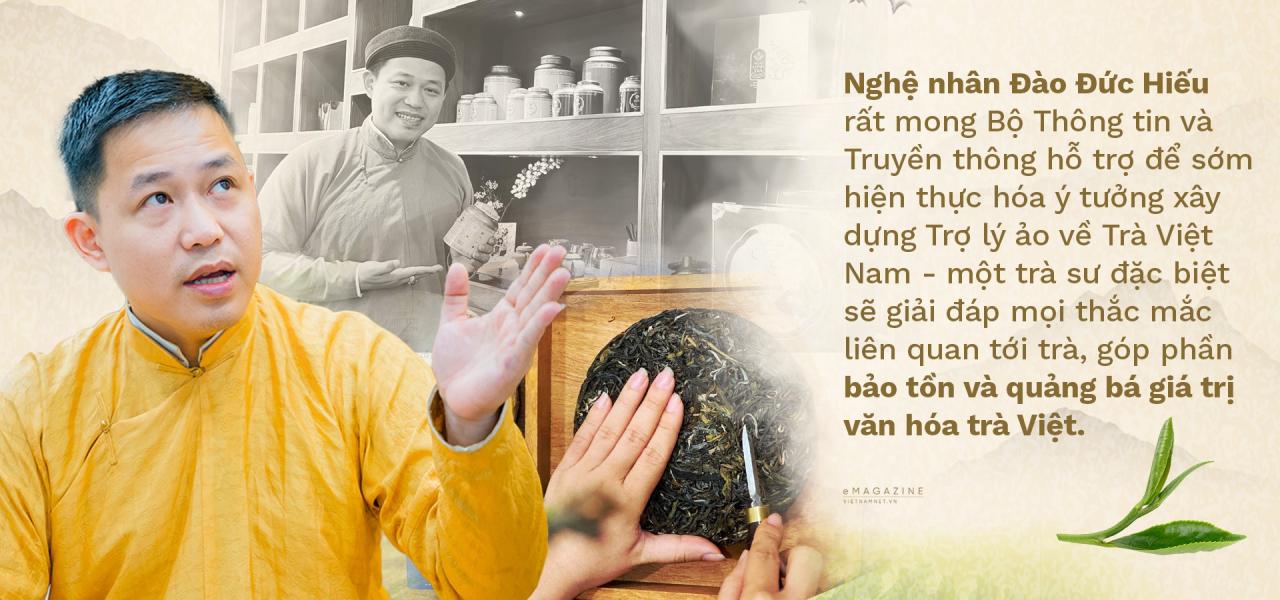 The Ministry of Science and Technology will support the search for scientific evidence to prove that Suoi Giang is the ancestor of ancient tea trees in the world, recognized by prestigious organizations in the world such as UNESCO (previously, a Russian academician who traveled to about 120 countries in the world said that Suoi Giang is the ancestral land of ancient tea trees in the world), creating more attractive stories to promote Vietnamese tea in the market. The Ministry of Foreign Affairs will support the construction of a dossier for UNESCO to recognize Vietnamese tea culture as an intangible cultural heritage of the world. The Ministry of Health will support the implementation of a strategy to balance Eastern and Western medicine in hospitals, tea becomes an oriental medicine, and tea will be included in the treatment regimen. In the near future, Vietnam will be able to become a destination for the world in medical tourism. The Ministry of Culture, Sports and Tourism will support the implementation of Tea Tour activities - tea tourism. Tours to tea regions will become a "keyword" of Vietnamese tourism, increasing income for people and the economy. In addition, it is necessary to build a handbook on Vietnamese Tea culture. The Ministry of Agriculture and Rural Development will support training for people to grow high-tech, biotech, and organic tea, meeting world standards, increasing the export advantage of tea. In addition to exploitation, we must also think about planting new tea to preserve tea for the next few hundred years. With the "participation" of ministries and branches, the development journey of Vietnamese tea in general, and of Vietnamese tea-making enterprises such as the Suoi Giang Ecological Tourism Cooperative in particular, will be less difficult and more favorable. Another great wish of the 8x generation Tea Artist: The first day of Tet every year will become Vietnam Tea Day. On this day, people across the country will drink Vietnamese tea instead of drinking imported tea from China, Sri Lanka, India, Russia, England, etc. "Drinking tea has become a beautiful cultural feature of Vietnamese people. If all Vietnamese people respond to Vietnam Tea Day, Vietnamese tea culture will flourish", the Tea Artist thinks about the future.
The Ministry of Science and Technology will support the search for scientific evidence to prove that Suoi Giang is the ancestor of ancient tea trees in the world, recognized by prestigious organizations in the world such as UNESCO (previously, a Russian academician who traveled to about 120 countries in the world said that Suoi Giang is the ancestral land of ancient tea trees in the world), creating more attractive stories to promote Vietnamese tea in the market. The Ministry of Foreign Affairs will support the construction of a dossier for UNESCO to recognize Vietnamese tea culture as an intangible cultural heritage of the world. The Ministry of Health will support the implementation of a strategy to balance Eastern and Western medicine in hospitals, tea becomes an oriental medicine, and tea will be included in the treatment regimen. In the near future, Vietnam will be able to become a destination for the world in medical tourism. The Ministry of Culture, Sports and Tourism will support the implementation of Tea Tour activities - tea tourism. Tours to tea regions will become a "keyword" of Vietnamese tourism, increasing income for people and the economy. In addition, it is necessary to build a handbook on Vietnamese Tea culture. The Ministry of Agriculture and Rural Development will support training for people to grow high-tech, biotech, and organic tea, meeting world standards, increasing the export advantage of tea. In addition to exploitation, we must also think about planting new tea to preserve tea for the next few hundred years. With the "participation" of ministries and branches, the development journey of Vietnamese tea in general, and of Vietnamese tea-making enterprises such as the Suoi Giang Ecological Tourism Cooperative in particular, will be less difficult and more favorable. Another great wish of the 8x generation Tea Artist: The first day of Tet every year will become Vietnam Tea Day. On this day, people across the country will drink Vietnamese tea instead of drinking imported tea from China, Sri Lanka, India, Russia, England, etc. "Drinking tea has become a beautiful cultural feature of Vietnamese people. If all Vietnamese people respond to Vietnam Tea Day, Vietnamese tea culture will flourish", the Tea Artist thinks about the future. 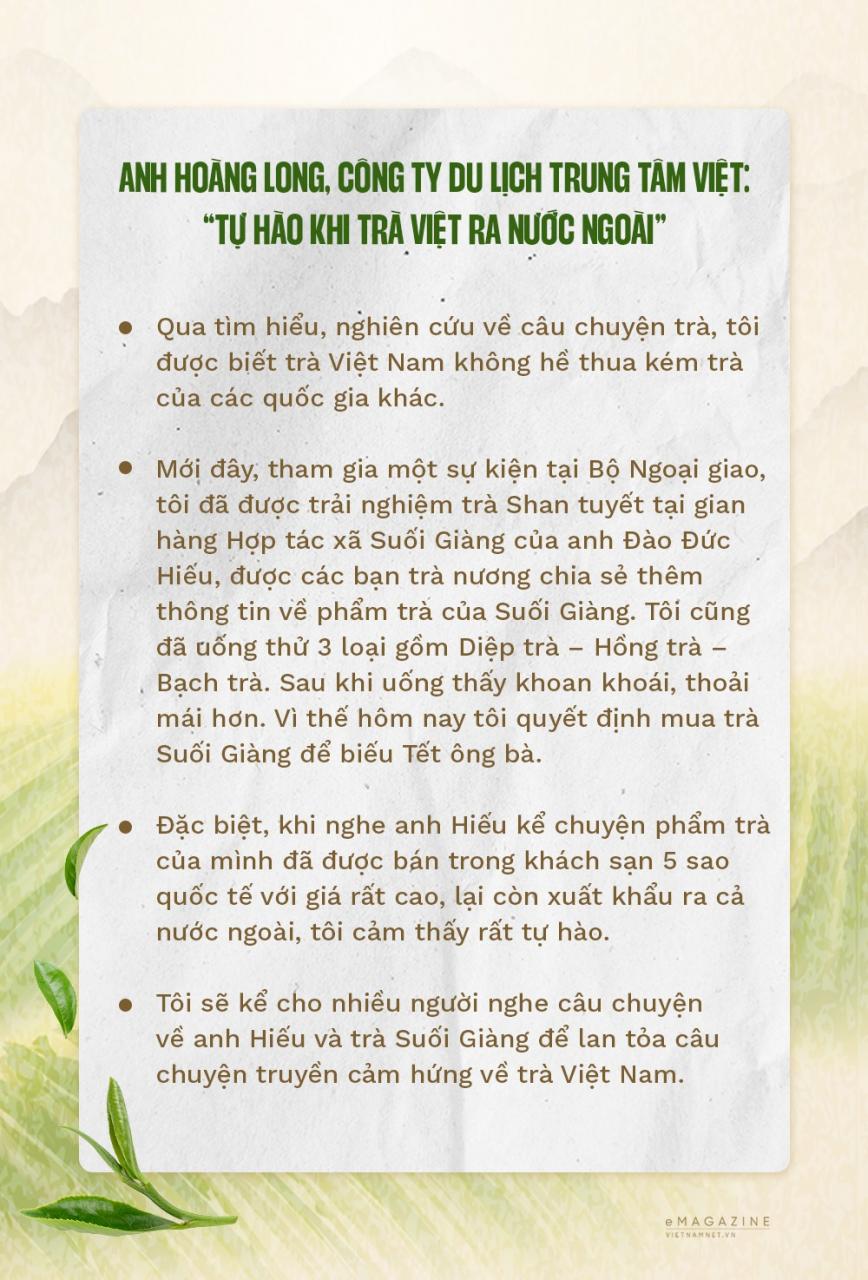
Binh Minh - Vietnamnet.vn
Source link

![[Photo] Special relics at the Vietnam Military History Museum associated with the heroic April 30th](https://vstatic.vietnam.vn/vietnam/resource/IMAGE/2025/4/3/a49d65b17b804e398de42bc2caba8368)
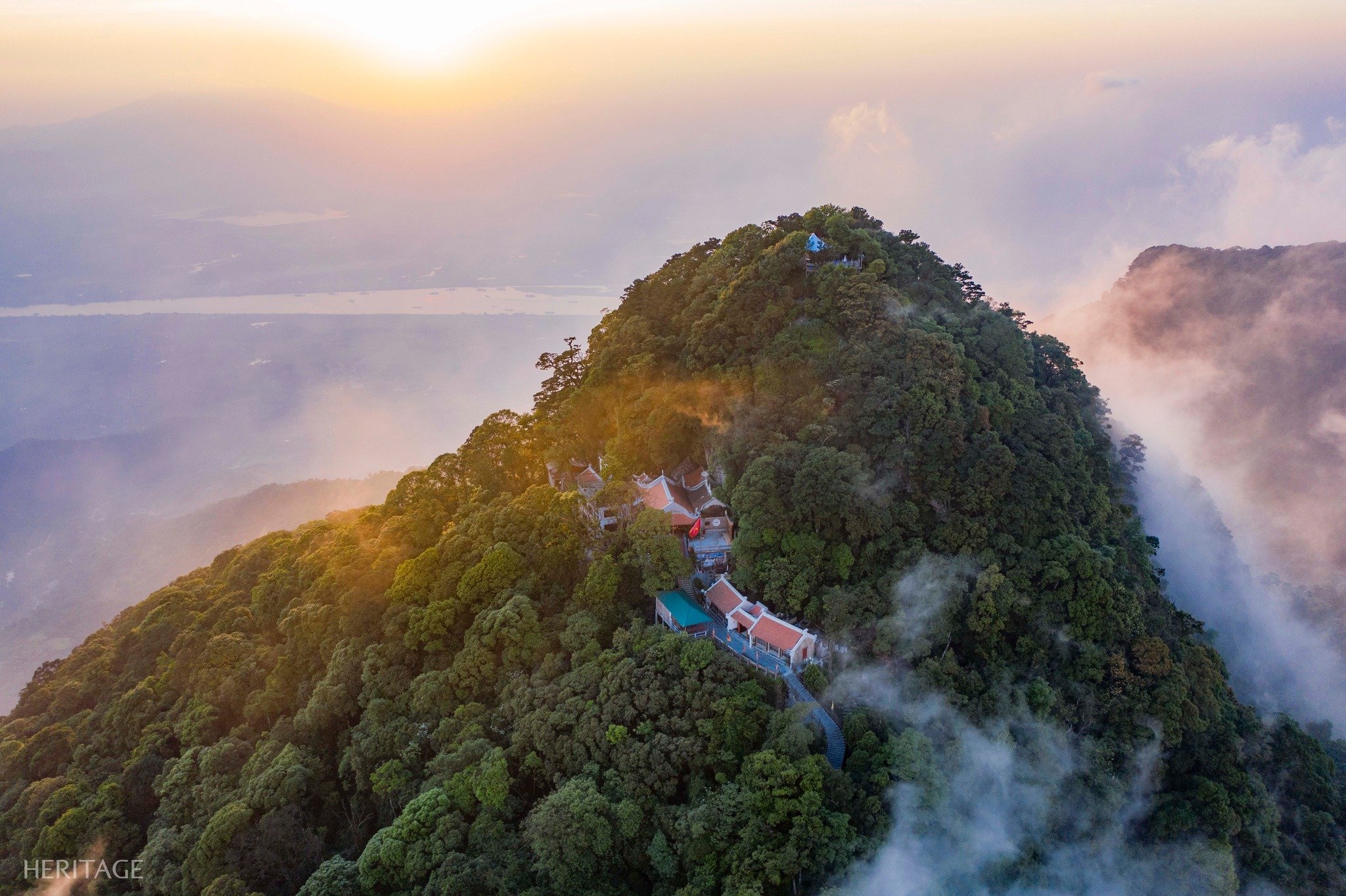
![[Photo] Prime Minister Pham Minh Chinh receives Deputy Prime Minister of the Republic of Belarus Anatoly Sivak](https://vstatic.vietnam.vn/vietnam/resource/IMAGE/2025/4/2/79cdb685820a45868602e2fa576977a0)
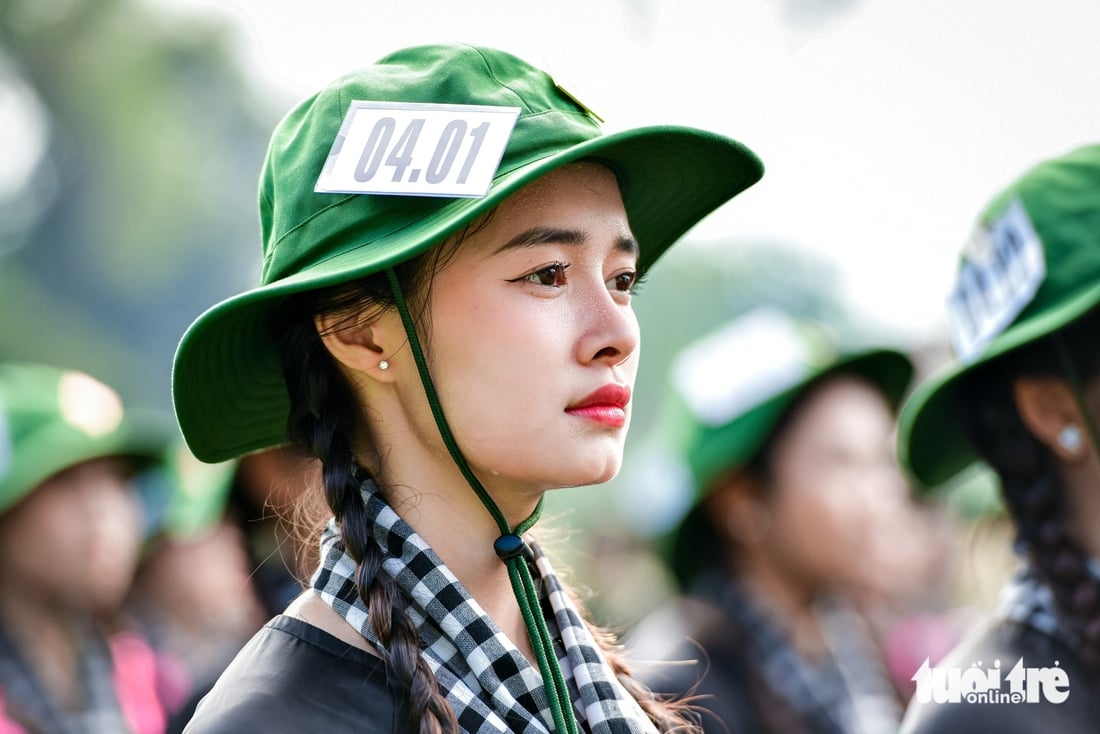
![[Photo] Comrade Khamtay Siphandone - a leader who contributed to fostering Vietnam-Laos relations](https://vstatic.vietnam.vn/vietnam/resource/IMAGE/2025/4/3/3d83ed2d26e2426fabd41862661dfff2)
![[Photo] Prime Minister Pham Minh Chinh receives CEO of Standard Chartered Group](https://vstatic.vietnam.vn/vietnam/resource/IMAGE/2025/4/2/125507ba412d4ebfb091fa7ddb936b3b)
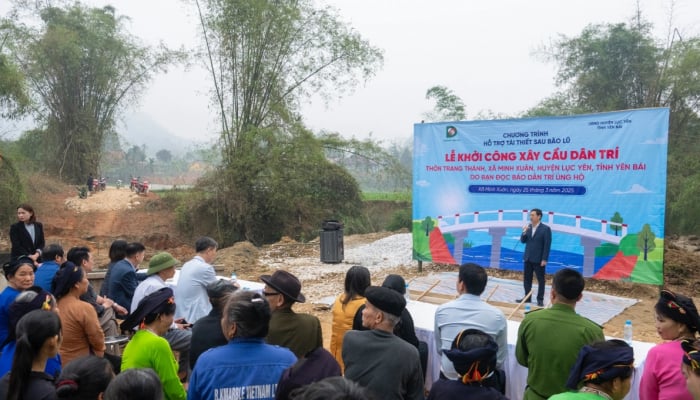

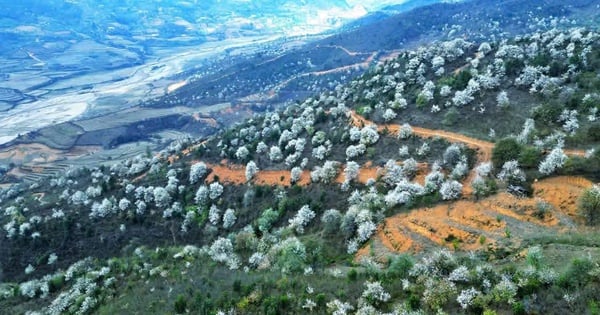

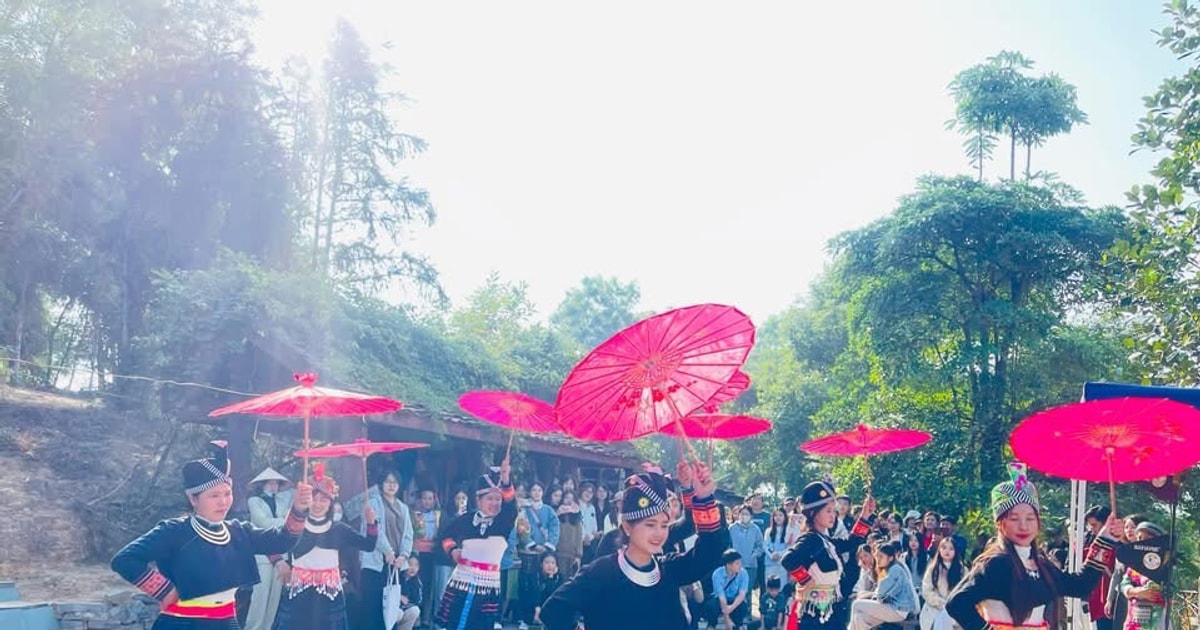

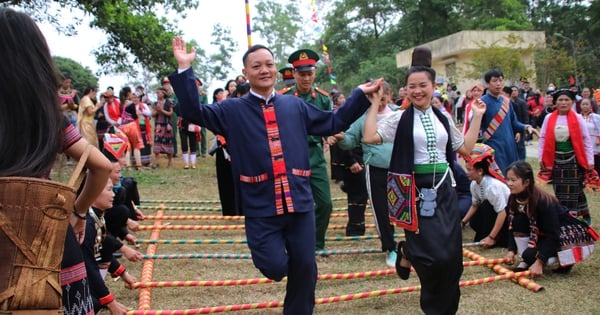

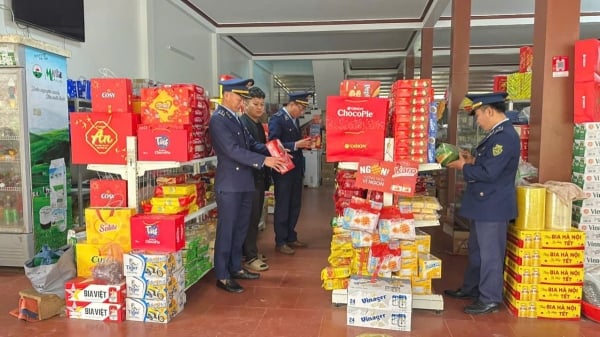

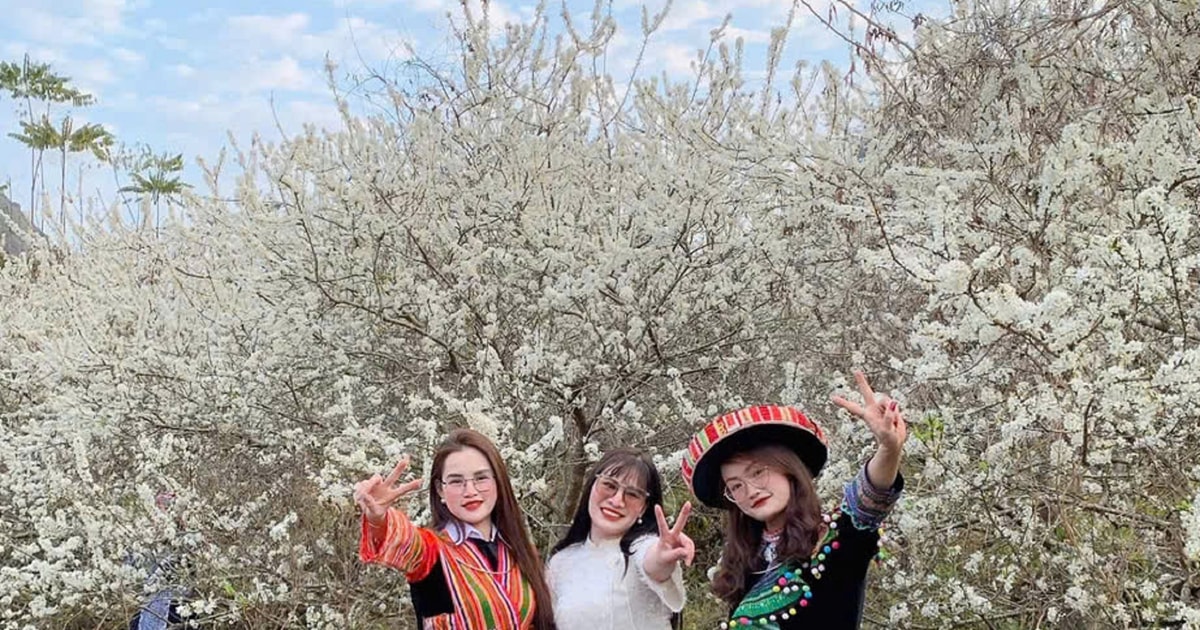
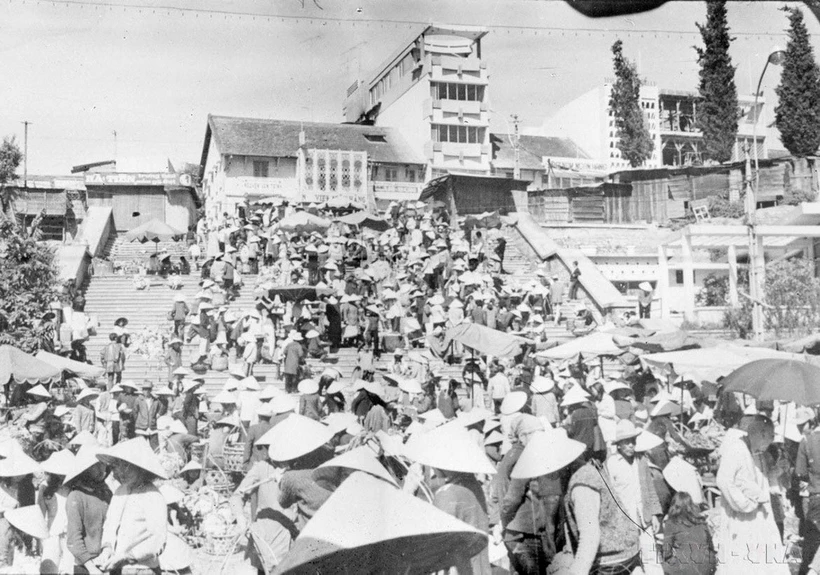
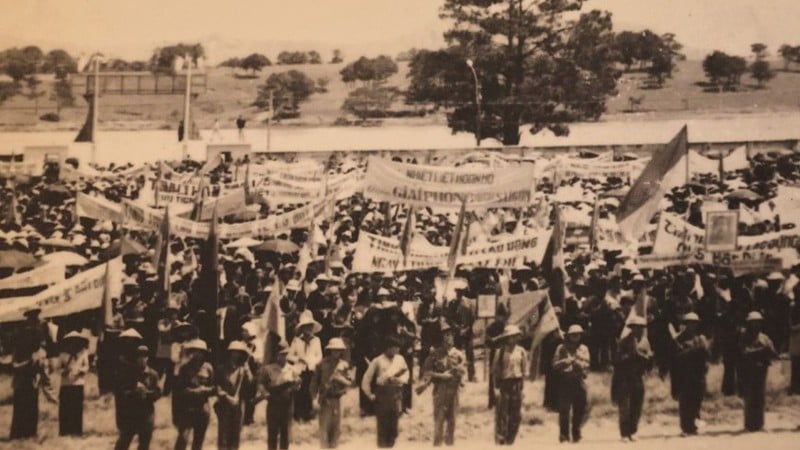


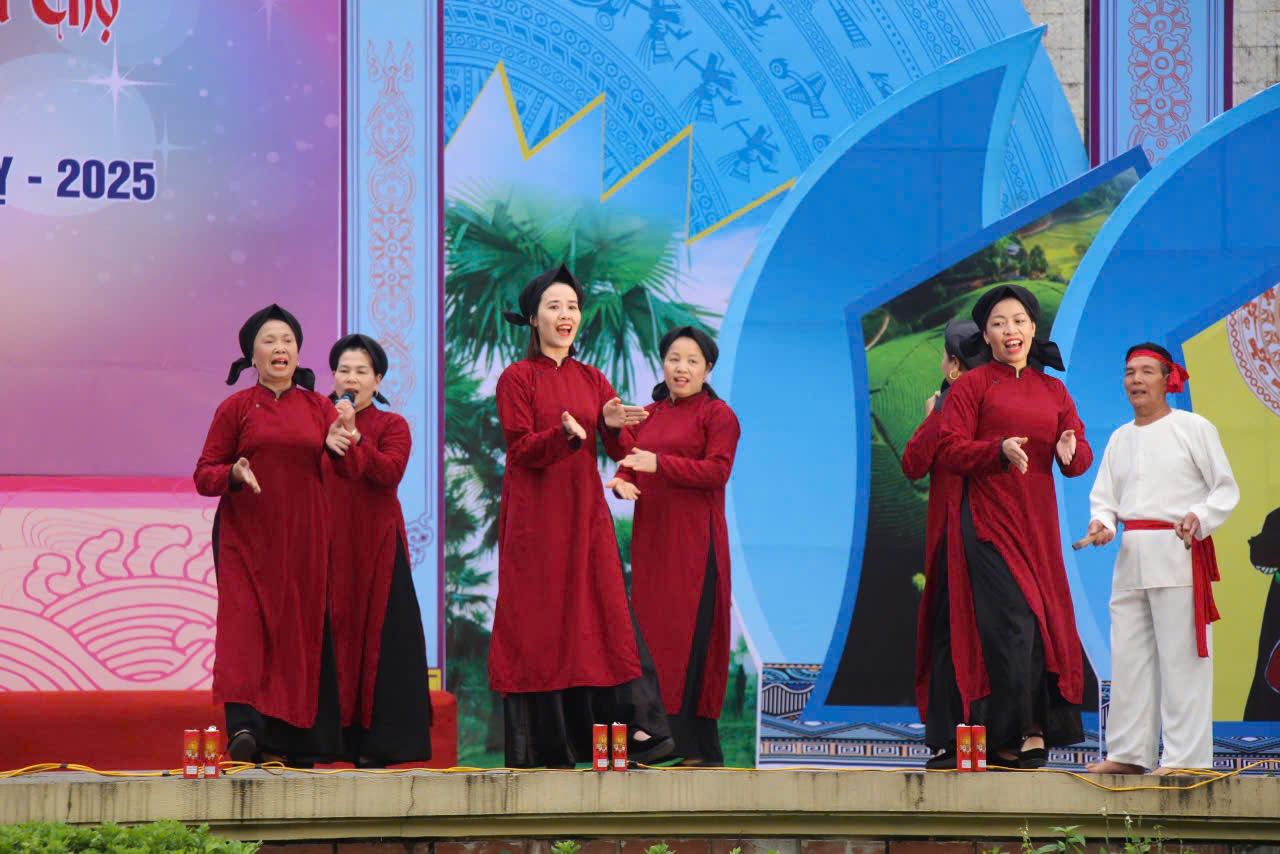
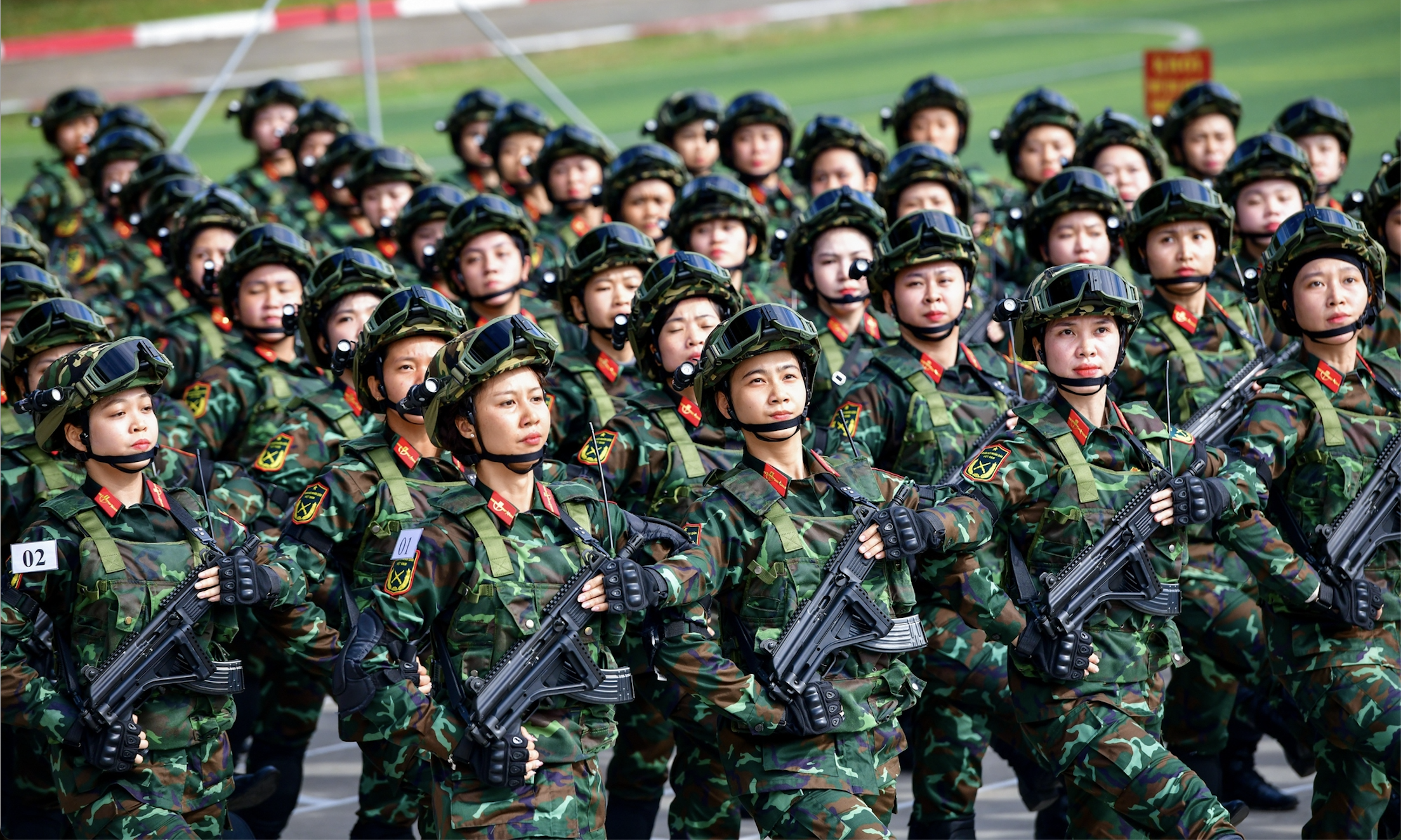




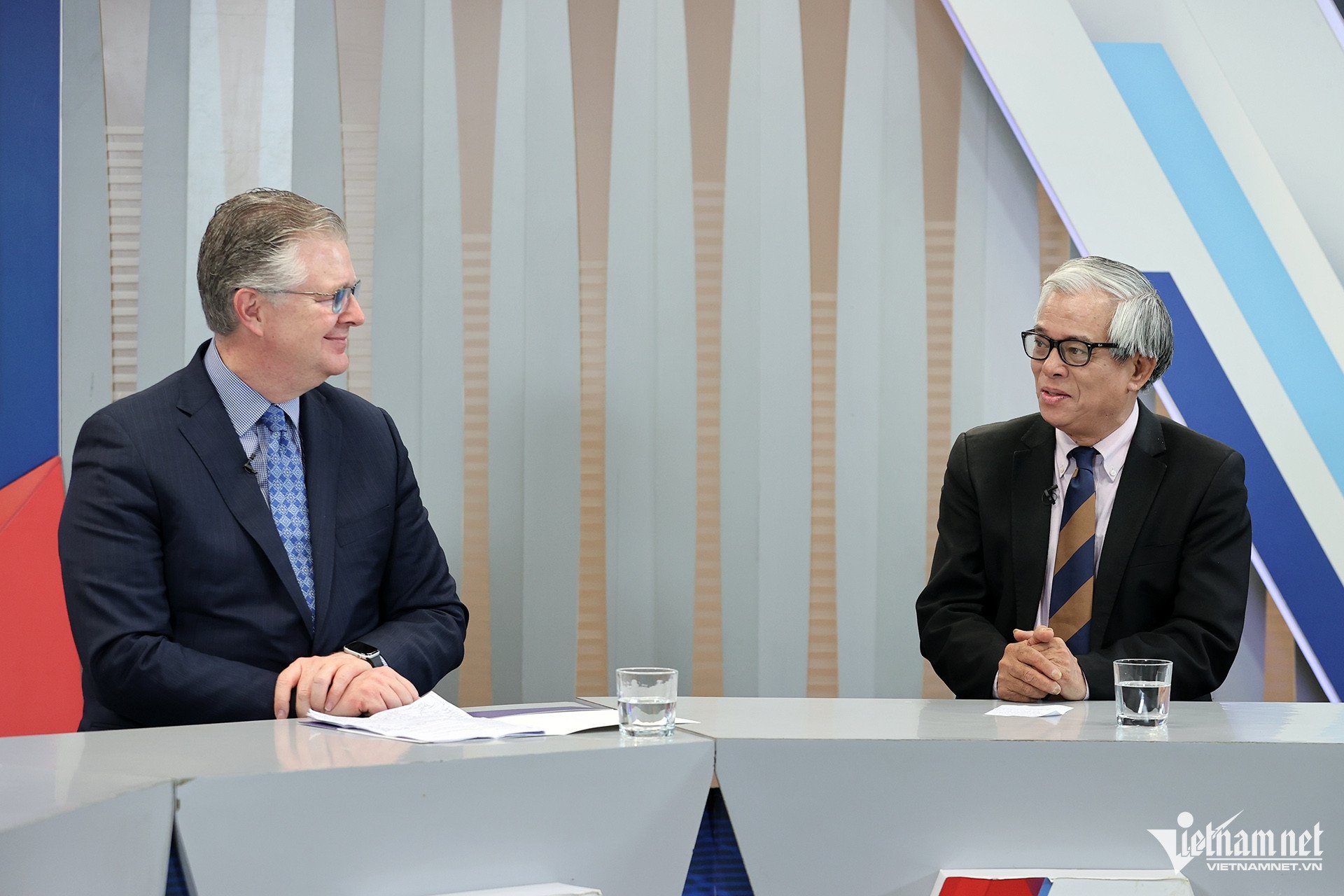
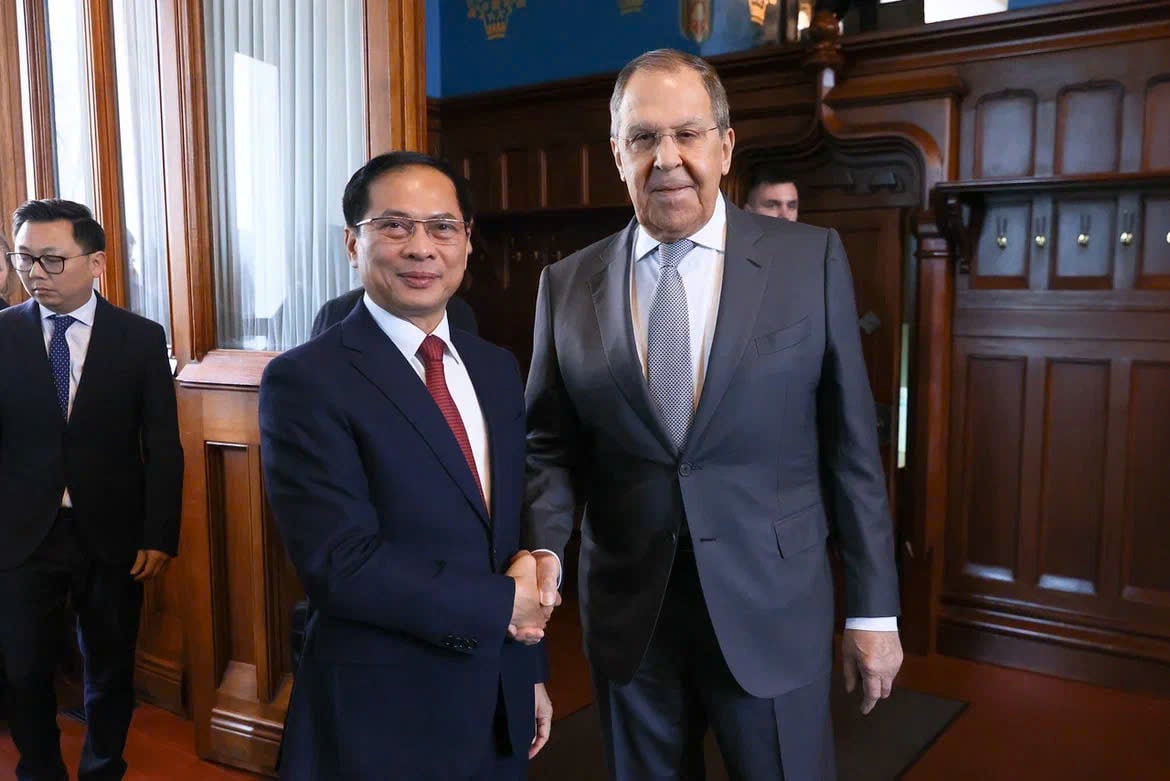
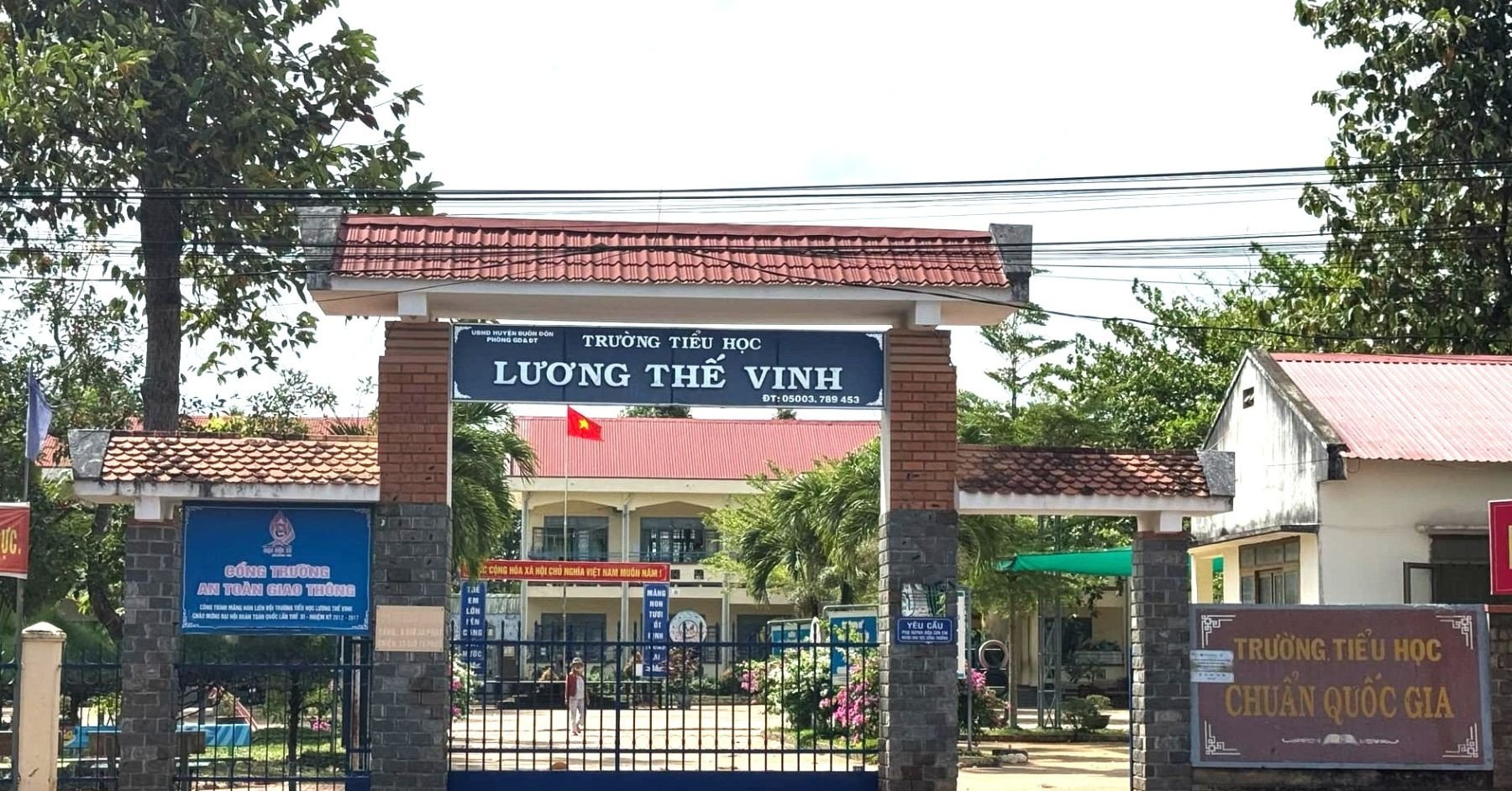
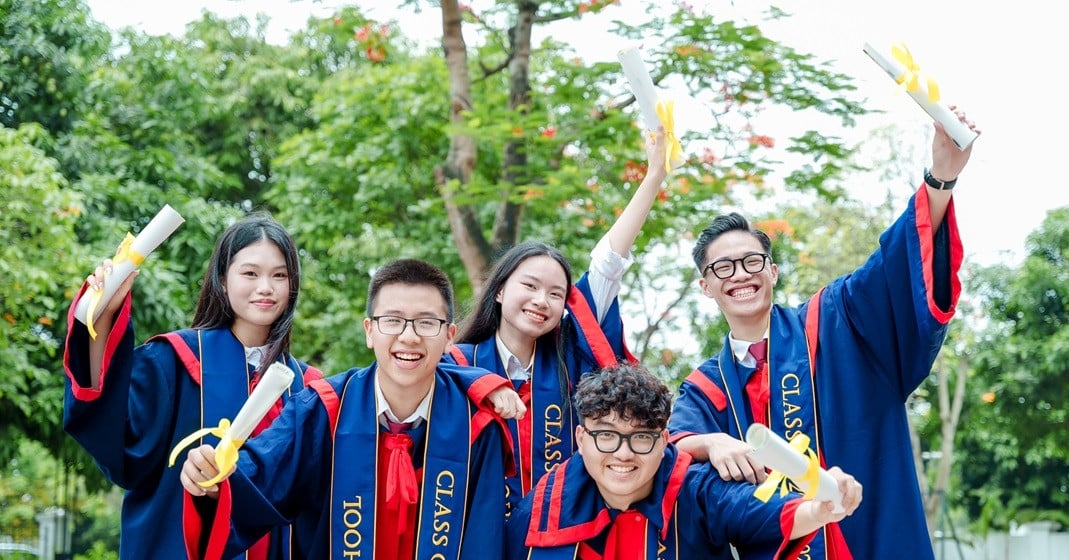













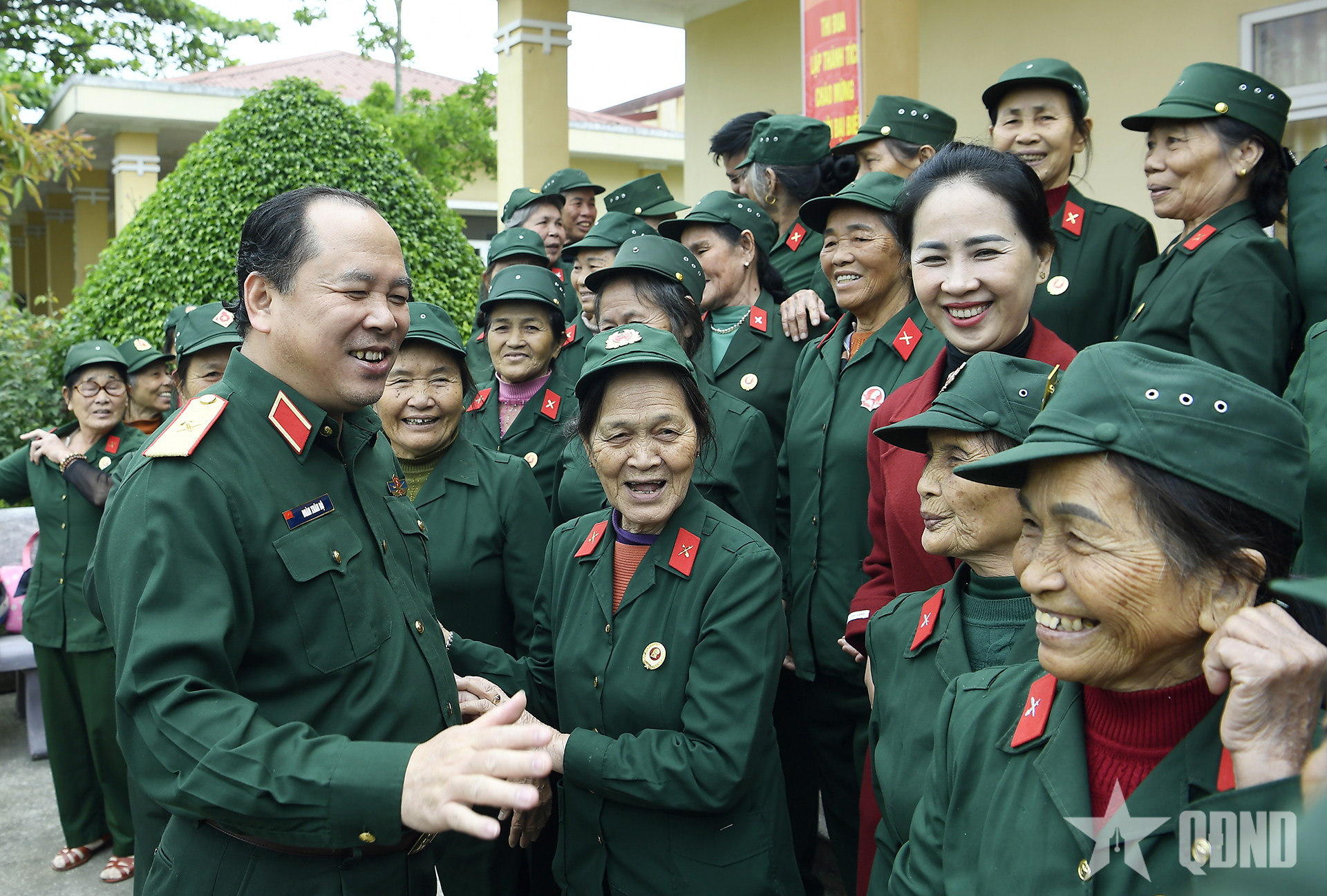














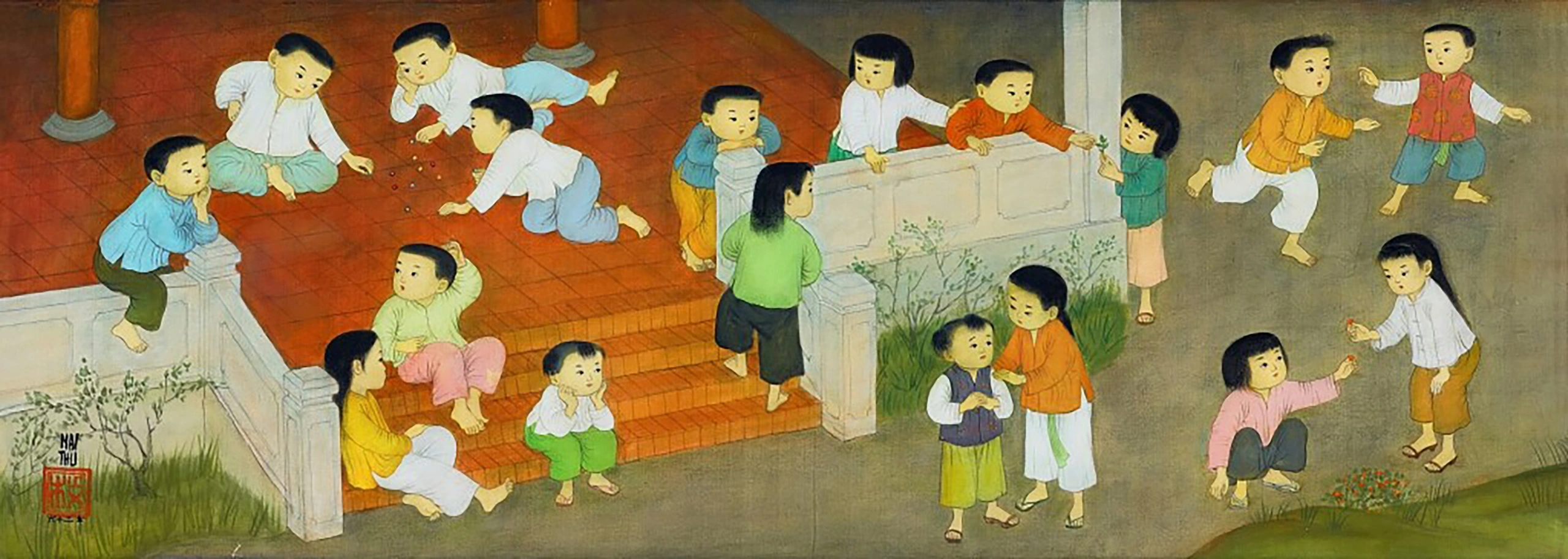

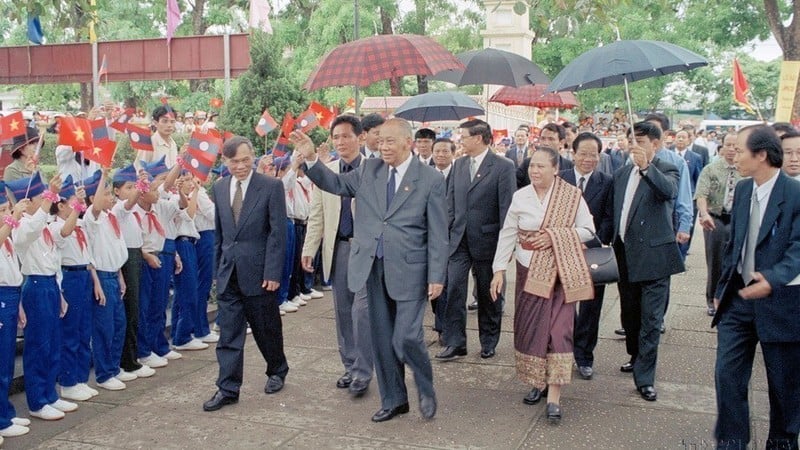




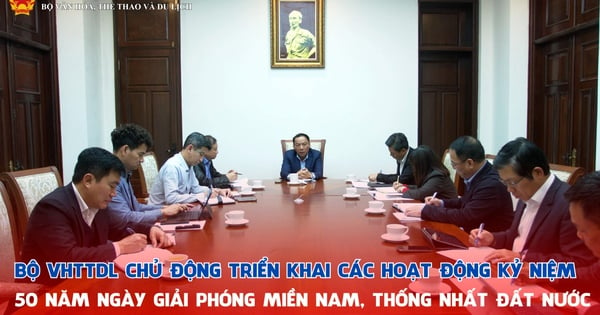

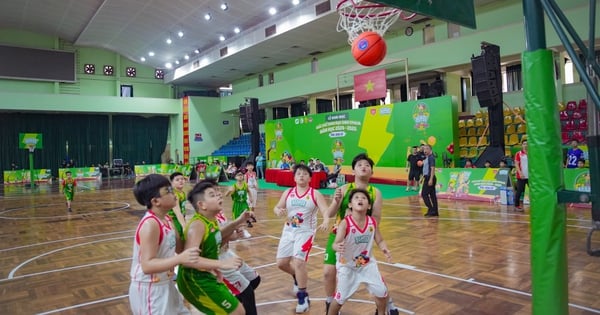
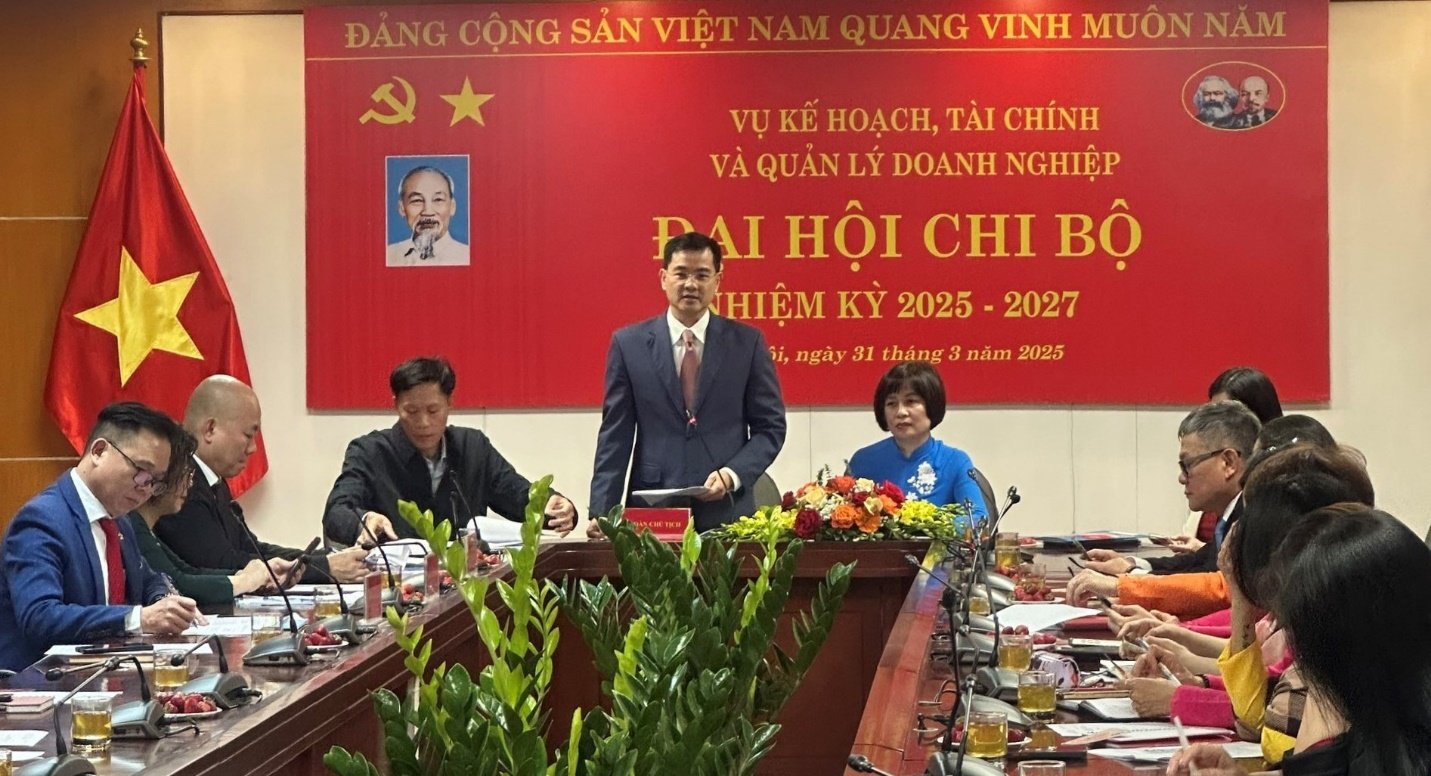

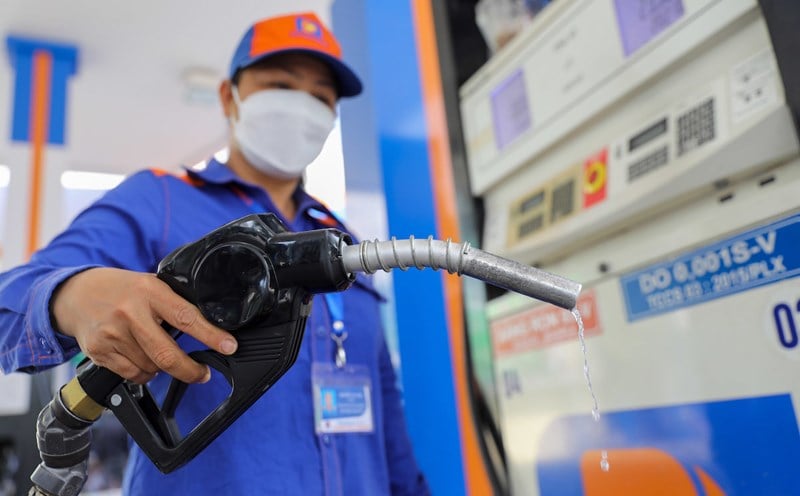

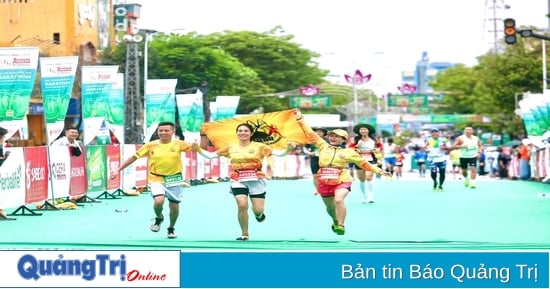

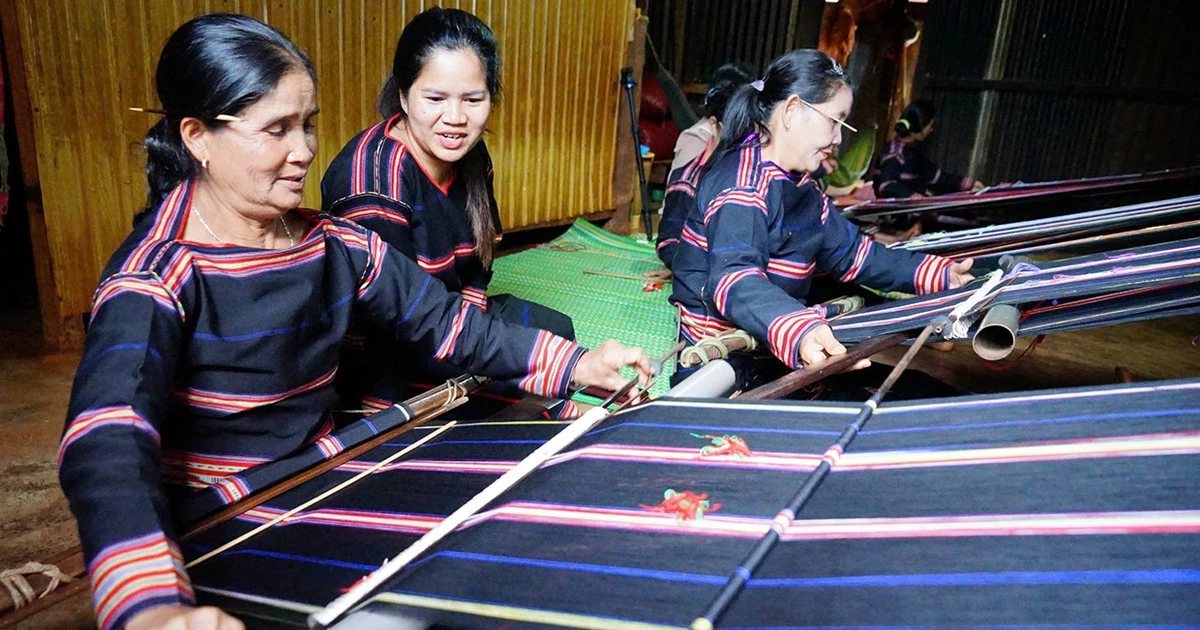

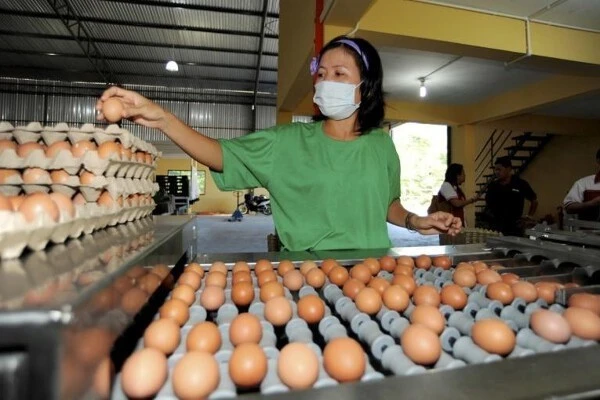
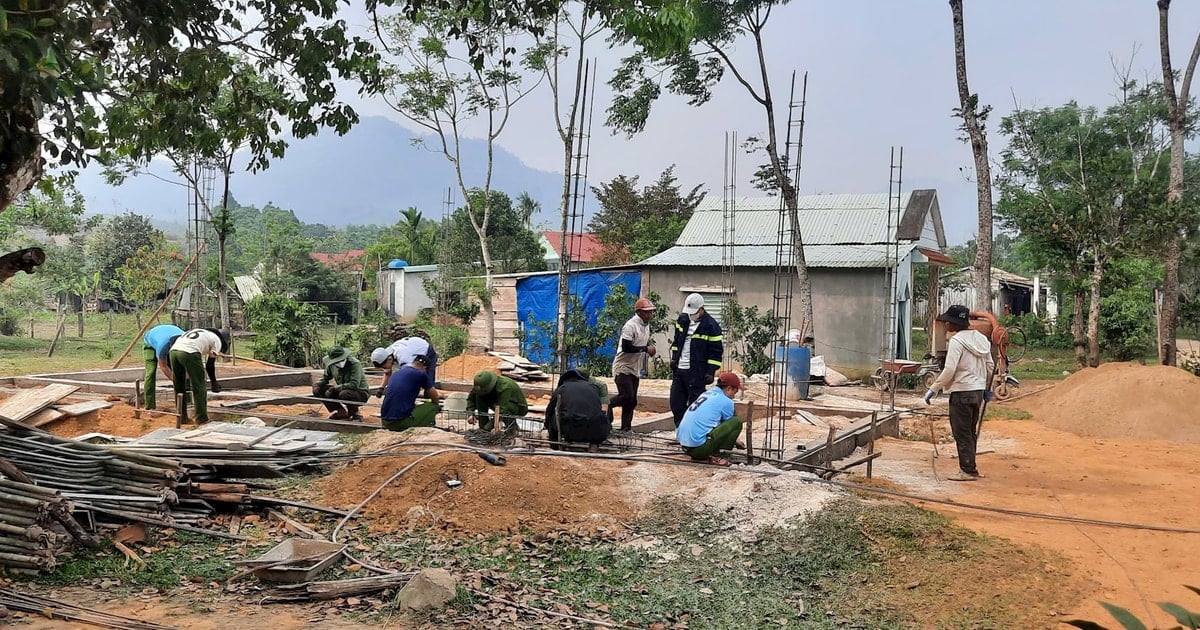
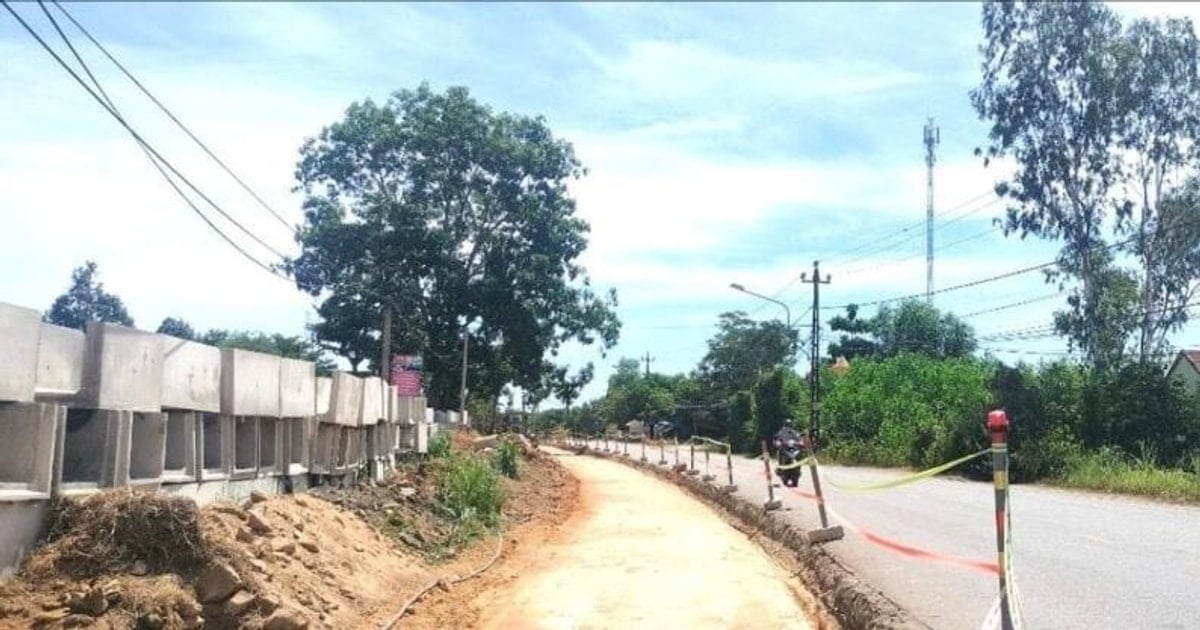
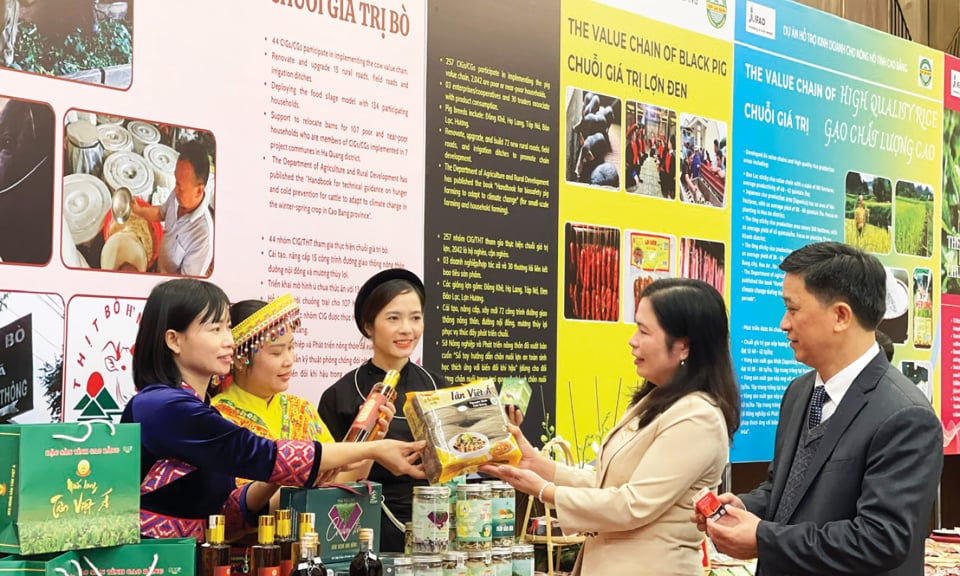






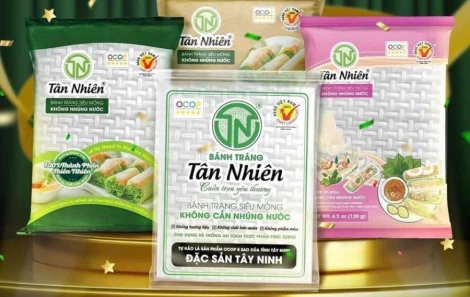




Comment (0)